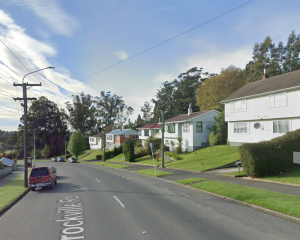Waiting lists for southern gynaecology patients are steadily climbing, but there is better news for those awaiting an ophthalmology appointment.
More than 3100 eye patients were classed as overdue in February, but a concerted effort by Southern District Health Board staff and locums has reduced that list by 1109 people in recent weeks.
However, during the same time period, the number of women overdue for gynaecology appointments in Southland has grown from 729 to 764.
Of those, 17 were considered urgent, 453 as semi-urgent, and 294 as routine; 514 have been on the waiting list more than six months.
SDHB chief operating officer Hamish Brown said the number of urgent gynaecology patients had fallen as they had been given priority.
However, Covid-19 and staffing issues had combined to drive up the waiting list.
"Efforts of recovery are being further hampered with the service manager testing Covid positive, one senior medical officer (SMO) testing positive for Covid, and another shortly going on maternity leave," he said.
"The relative increase in SMOs through this period has been counteracted by leave through the summer period."
Moves to try to reduce the waiting list included additional clinics, an external provider being asked to help, and a recruitment drive for the service, Mr Brown said.
One suitable locum candidate from overseas was being reference checked for a potential 12-month role starting in September, and it was hoped another nursing role would be filled by May.
Endometriosis New Zealand chief executive Tanya Cooke said many of the Southland women on the waiting list would have the inflammatory disease. Because of
capacity issues, referrals to DHBs were being declined for many women with endometriosis.
ENZ recently released a study on diagnosis and treatment times which found the average diagnosis took 8.7 years, and on average five doctors needed to be seen before the diagnosis was made.
"Covid-19 has significantly impacted access to public health care for those with endometriosis and the situation is unlikely to improve in the foreseeable future unless action is taken urgently," Ms Cooke said.
"Unfortunately, the longer patients are waiting, the longer they are suffering."
Mr Brown said about 2000 people who were overdue wee still to be seen, but critical patients numbers had dropped from 73 to 11.
"Recruitment continues for a senior medical officer: nursing, administration and health care assistant positions have now been filled or are in the final stages prior to commencing.
An optometrist would start in April and a UK-based orthoptist will begin work once their immigration visa was finalised.
The service also planned to start using community optometrists to treat some patients, funded by the SDHB.
"This option is significantly more cost effective than being seen by locums and will aid in our transition to decrease follow-ups for stable patients," Mr Brown said.












